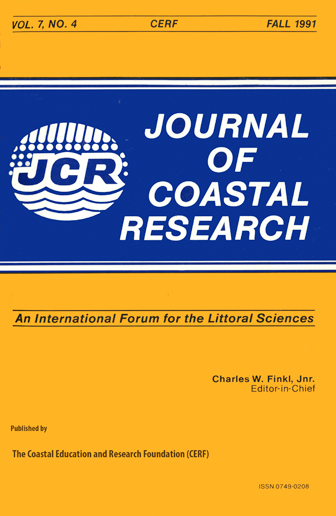Plant-Rich Holocene Sequences in the Northern Nile Delta Plain, Egypt: Petrology, Distribution and Depositional Environments
Keywords:
Dilution, Marsh-lagoonal environments, Nile delta paleogeography, peat, Plant-rich layers, Submergence, Vegetal matterAbstract
Petrological analyses of 70 borings recovered across the northern Nile delta, including counts of floral debris in 2200 core samples, serve to distinguish 4 different Holocene sediment types containing vegetal matter. These types constitute three major plant-rich lithostratigraphic sequences which are concentrated in two distinct areas: northeastern delta (south of Manzala lagoon) and north-central delta (from central Burullus lagoon to Idku lagoon). Petrological attributes of core sections containing vegetal debris indicate that these accumulated preferentially in back-barrier marshes, lagoon margins and interdistributary lows. The development of peat and related organic-rich facies was influenced by dilution effects, a function of seasonal detrital influx during flooding of River Nile distributary channels and sediment transport from the sea. Regional differences in lithofacies, aerial configuration and age of vegetal-rich sequences on the lower delta plain are interpreted in light of various controlling factors: submergence (tectonic subsidence, eustatic sea level rise), paleoclimatic change (affecting River Nile headwater flux and distributary channel migration and flooding), coastal processes and evolving configuration of depositional environments behind coastal sand ridges in a wave-dominated regime. Although the Nile delta has formed under generally arid conditions, thicknesses and accumulation rates of mid- to upper Holocene plant-rich layers locally are comparable to those in some deltas formed in temperate and tropical regions.


